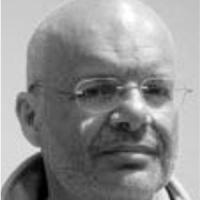
Research interests
The leitmotif of SB's research over the years has been the development of new theoretical ideas and numerical tools allowing for the computation of properties and simulation of processes otherwise inaccessible to a quantitative theoretical investigation. SB's research has touched on several and diverse applications, including semiconductor interfaces and alloys, the chemical reactivity of metal surfaces and catalysis, lattice dynamics and related materials properties, including those occurring at extreme pressure and temperature conditions, and the dynamical properties of quantum systems, such as e.g. small helium clusters. He is known for pioneering different quantum simulation methods, among which the most widely know are probably density-functional perturbation theory, used for simulating lattice and molecular vibrations, and reptation quantum Monte Carlo, a path-integral technique used for simulating static and dynamical properties of interacting quantum systems.
In the next few years this research will be further pursued along the following lines:
- Optical properties of complex molecular and nano-structured systems.
Conventional quantum simulation methods based on density-functional theory (DFT) are unable to address dynamical processes involving charge excitations. More accurate techniques based on time-dependent density-functional theory (TDDFT) or many-body perturbation theory (MBPT), though potentially apt to treat these phenomena, have been limited so far to model systems of rather limited size (one to two order of magnitudes smaller than those currently treated using DFT). Building on our a novel Lanczos approach to TDDFT and to MBPT, we will address the optical excitation spectra of systems in the hundreds-of-atoms size range, with applications to biological molecules and photovoltaic devices. This research line will be carried on in collaboration with Ralph Gebauer (ICTP) Paolo Umari (CNR and University of Padua). - Slow dynamics in classical and quantum systems.
Some 10 years ago SB, in collaboration with Ralph Gebauer, then a PhD student of his, provided an unified approach to the low-energy dynamics of many quantum systems, based on the adiabatic decoupling of a suitable (collection of) collective variable(s). In collaboration with Ralph Gebauer (now staff at the ICTP) this approach is being further generalized and will be applied to different quantum phenomena including collective tunneling in many-body systems and electronic transport in molecular devices. A different approach to the same problem will be pursued in collaboration with Alessandro Laio: the isomorphism between the Fokker-Planck equation for the overdumped Langevin dynamics and the Schroedinger equation in imaginary time will be used, in conjuction with path-integral techniques borrowed from reptation quantum Monte Carlo, to compute tunneling splitting in quantum systems from transition rates in suitably defined classical models. - Software engineering.
SB is the main promoter of the Quantum ESPRESSO (QE) project. This project will be pursued along four main lines: 1) enhancing the capabilities, by addressing more properties, particularly as concerns excited states; 2) enhancing the performances, particularly as concerns massively parallel architectures enabling peta- and exa-scale computing; 3) enhancing user friendliness through scriptable and graphical user interfaces; 4) enhancing the validation and reproducibility of the codes, by making QE interoperable with other software and by publishing libraries of pseudopotentials and of benchmarks.